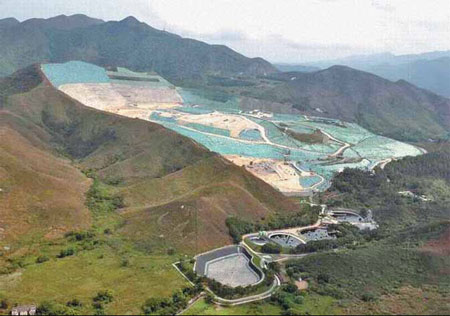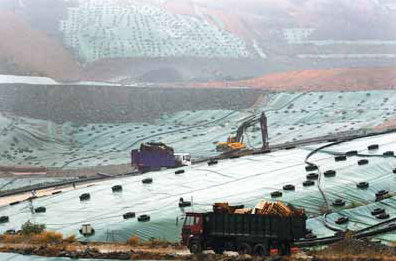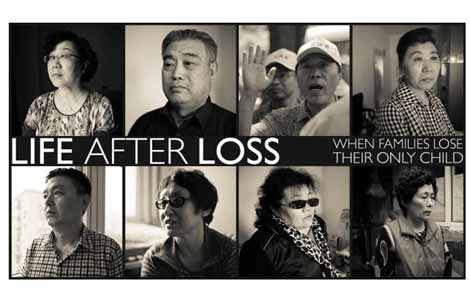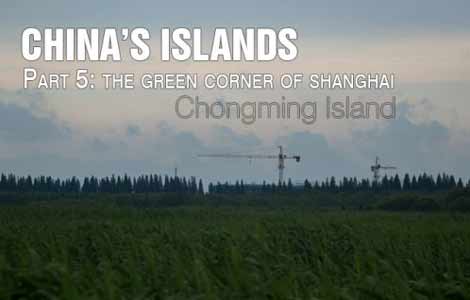Foul air rises over landfill expansion
Updated: 2013-09-30 08:06
By Lin Jing and Chen Hong (China Daily)
|
||||||||
Residents say they bought homes 'for the view, not the smell', Lin Jing and Chen Hong report.
For the people living along Shenzhen Bay, life has become a nightmare.
"It stinks so much," complained Yang Li, who moved to Shekou, in Shenzhen's Nanshan district, in 2007. "It seems even worse this year."
Her home overlooks the bay, which forms a natural border between the Chinese mainland and Hong Kong. Just 5 kilometers across the water, however, is the large and controversial Tuen Mun landfill.
"We get the rotten smell floating over three to four times a week, whether it's windy or not. It's so bad in the mornings we can't open the windows," Yang said. "We bought the house here for the view, not the smell."
Another woman in her neighborhood described the recurrent odor as "unbearable" and "worse than human feces".
Residents fear worse could come if authorities in the Hong Kong Special Administrative Region go ahead with plans to expand the Tuen Mun landfill, and they are desperately calling for their discomfort to be taken into consideration during the decision-making process.
Shenzhen Bay, known in Hong Kong as Hau Hoi Wan, is mostly enclosed by hills and high-rises. On the shore directly opposite Nanshan is a green expanse that, from afar, looks like a large garden under construction.
"We thought it was a scenic spot when we arrived," Yang said, describing the landfill, which is largely covered by green plastic material. "But then the area got bigger and bigger, and the smell got worse."
Tuen Mun landfill, opened in 1993, is one of only three still operated by Hong Kong, the others being at Tseung Kwan O and Ta Kwu Ling. Together the sites have a total capacity of 140 million cubic meters.
Authorities closed 13 landfill sites between 1988 and 1996, converting the land into public gardens and parks and other facilities.
With land scarce and costly, however, solutions for how to handle the increasing amount of trash being produced by this densely populated city have been hard to find. Hence, this year the Hong Kong government said funds had been allocated to expand the landfills at Tuen Mun and Ta Kwu Ling.
The news triggered widespread opposition from residents and district officials on both sides of Shenzhen Bay. Hong Kong media reported more than 50 people took part in an "overnight hunger strike" outside the city's Legislative Council building on July 12 to demand the withdrawal of the funding request.
Authorities soon decided to suspend the plan to allow for further discussion.
Risky business
According to the Hong Kong Environmental Protection Department, an environmental impact assessment for the expansion plan was carried out and approved by the Legislative Council in 2009.

The report covered air quality, health risks and ecology, and concluded that, with "mitigation measures", the potential impact from the construction and operation of the project would be "acceptable and controlled to within the established standards and guidelines", the authority said in a statement.
"We consider it (the expansion at Tuen Mun) would not cause any adverse impact on Nanshan district, which is ... separated (from Hong Kong) by the open and windy bay."
Residents in the Shenzhen suburbs disagree, and argue that their interests are being ignored.
The landfill is a "timebomb" that could result in mud flows, explosions and water pollution, according to Ao Jiannan, who runs the Environment Protection Unit, which is affiliated to the Nanshan district government.
"No one wants to see and smell waste when they open their windows every day," he said. "The Hong Kong government should at least have had to inform us first before they made the proposal to expand the landfill."
He said the placement of the Tuen Mun landfill and a nearby waste treatment facility are both wrong, as they are too close to residential communities.
"Originally Tuen Mun was a rural area, but Nanshan is developing across the river very fast, with a growing population and more buildings. Any expansion of the landfill will jeopardize future development," he warned.
'Obnoxious projects'
The dispute over Tuen Mun is not the first environmental clash between the neighboring cities.
Daya Bay Nuclear Power Plant, which is in Shenzhen, has long been a controversial topic. When it was built in the 1980s, more than 1 million people in Hong Kong signed a petition protesting against the construction due to concerns over nuclear contamination and water pollution.
In 2010, there was further outcry in the SAR when it was reported a fuel tube at the plant had leaked. China Light & Power, a shareholder in the facility, confirmed in a statement there had been a small leak, but said it fell below international standards requiring them to report it as a safety issue.
More recently, on Aug 28, the Hong Kong Environmental Protection Department revealed a pollution case in July involving Ta Kwu Ling landfill, which is roughly 1 km from the Liantang suburbs of Shenzhen.
Sewage had leaked into the Shenzhen River, causing cross-border contamination, the authority said.
Chan Wan-sang, an outspoken opponent of the landfill expansions, is all for preventing further incidents, as well as further blights on his city's landscape.
"I have been against the landfills for the past nine years," said Chan, a district councilor in Tuen Mun for more than two decades.
He complained his area is already home to a power plant, landfill and steel factories. "The district has taken on too many obnoxious, polluting projects. It should not stand for any more," he said.
Tuen Mun used to have a low population and lots of free space, making it suitable for landfills. Yet the district has developed considerably, he said, not least because it faces Qianhai, Shenzhen's rising economic zone, while a customs base opened at Shenzhen Bay in 2007 now means a greater number of people pass through.
"When the Hong Kong-Zhuhai-Macao Bridge is finished, I believe Tuen Mun's development will also speed up. So we have to preserve enough clean land for the future," Chan said. "A landfill expansion will be expensive and unfriendly to the environment, and the land will not be much use after it is eventually closed."
However, in August, a poll by the University of Hong Kong's Public Opinion Programme of 1,000 people citywide discovered 57 percent were in support of the expansion plans. Only 19 percent objected.
Incineration switch
Although the expansion plan is on hold, Hong Kong still faces the question of what it will do when its remaining landfills are completely full, which could be a reality in the next two to six years.
The three sites handle 13,500 metric tons of waste a day, according to the Environmental Protection Department. This includes roughly 6,000 tons of household waste, more than half of it food, plus 3,400 tons of construction waste, and 1,000 tons of dewatered sludge.
To collect, transfer and treat the waste and the run landfills costs the city about HK$1.4 billion ($180 million) a year.
For some people, including Shenzhen environmentalist Ao, the answer to the impending trash crisis is incinerators, such as those in Japan and South Korea that incorporate biofuel technology.
"Incineration can reduce the volume of waste by 80 percent. Plus, there's not much of a hazardous impact, and they can also be used to generate electricity," he said. "Hong Kong should shift its attention from landfills to incineration and build more sites, to reduce waste transport costs and secondary pollution."
After a study in 2007 and 2008, the Hong Kong Environmental Protection Department identified two sites suitable for the SAR's first waste incinerator, at Tuen Mun district's Tsang Tsui Ash Lagoons and the artificial island near Shek Kwu Chau, southwest of Hong Kong.
Going on further feasibility and environmental impact tests, authorities chose the island and eventually announced plans for a facility that will handle 3,000 tons of waste a day.
However, construction cannot start until 2014 due to the legal procedures and safety requirements related to transporting waste via ship, meaning it will be some time before the incinerator can go into action.
Faced with data suggesting that the Tseung Kwan O landfill will be full by 2016 and the one at Tuen Mun by 2019, city officials proposed making more room at existing sites to take the strain.
Chan, the district councilor, said he recognizes the need to expand the landfill while work continues on the incinerator, but he insisted any plan must include a size limit and a clear timetable for closure.
"Not every district in Hong Kong is suitable for a landfill," he said. "The plan is only acceptable to us as long as it is kept to within 100 hectares and comes with a commitment to close the Tuen Mun landfill when the incineration starts operation."
Shenzhen's environment commission and the Nanshan district environmental protection bureau declined to comment about the expansion plan.
Residents close to Shenzhen Bay, however, have been vocal in expressing their anger and opposition to the proposal.
"Environmental protection is a global issue," said Zhang Yunkun, who lives in Shekou. "You can't do harm to your neighbor just to benefit yourself. It's irresponsible and selfish for Hong Kong to build a landfill near a community."
He has complained about the air pollution to the Nanshan authorities, but the 56-year-old said he has so far received no feedback.
The Tuen Mun landfill should be closed for good, he said, warning that it could even hamper the progress in developing Qianhai into a financial services zone.
"When the Daya Bay Nuclear Power Plant was under construction, Hong Kong residents were informed. Now we want the same rights," Zhang said, adding that all residents deserve to be kept in the loop about projects that may affect them.
Chan conceded there have been misunderstandings in the past, and that his government should have discussed its plans with people in Shenzhen.
"Two regions share the same bay. Mutual respect is very important," he said.
Exchanging ideas
The landfill expansion plan will be resubmitted to the Legislative Council when members return from the summer recess in October.
In the meantime, the city's Environmental Protection Department said it welcomed exchanges with its counterpart in Shenzhen and will continue to explore cooperation opportunities.
"We understand the concerns of residents about our landfill operation," read the department's statement. "We would be pleased to introduce and exchange views on the landfill design and operation with a view to strengthening our communication and mutual understanding on the issue."
Ao also said he is staying optimistic about any future decisions.
"I think they (Hong Kong authorities) will listen to residents from both sides and make a wise choice," he said. "Otherwise, there will be no progress in environmental protection, only a potential threat for both cities.
"Any strategy should be negotiated and mapped out by officials and residents from the two cities."
Contact the writer at linjingcd@chinadaily.com.cn
Zhu Jing in Shenzhen contributed to this story.
|
Covered largely by green plastic material, one woman in Shenzhen said she initially thought the Tuen Mun landfill was a scenic spot, until she moved into her new home at Shenzhen Bay and was inundated by the smell of waste. Many people, including the woman, have criticized the Hong Kong authorities' expansion plans. Photos by Edmond Tang / China Daily |
|
District officials on the mainland and in the SAR have raised objections to boosting the size of the landfills, which Hong Kong authorities proposed to fill the gap while an incinerator is built. |
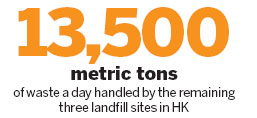
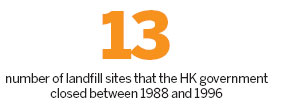
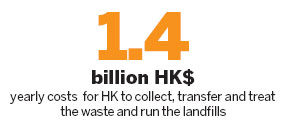
(China Daily USA 09/30/2013 page7)

 National Day holidays around the world
National Day holidays around the world
 Martial arts to attract golden week tourists
Martial arts to attract golden week tourists
 Investing a nation's wealth wisely
Investing a nation's wealth wisely
 This China Dream
This China Dream
 Williams, Li into second round at China Open
Williams, Li into second round at China Open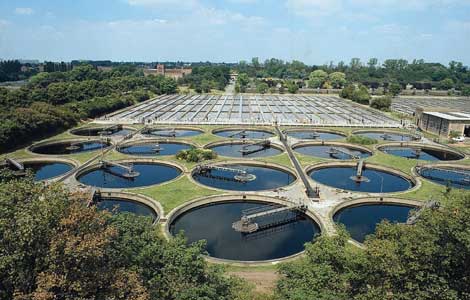
 Visible face of CIC investment
Visible face of CIC investment
 Up, up, Huawei finds new friends in Europe nations
Up, up, Huawei finds new friends in Europe nations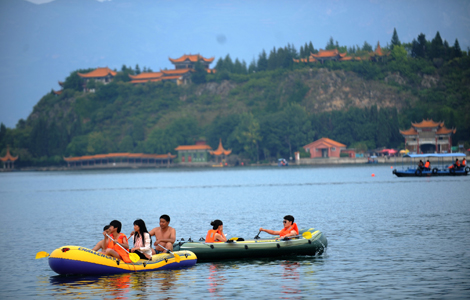
 Yuxi to shield Fuxian Lake by creating wetland area
Yuxi to shield Fuxian Lake by creating wetland area
Most Viewed
Editor's Picks
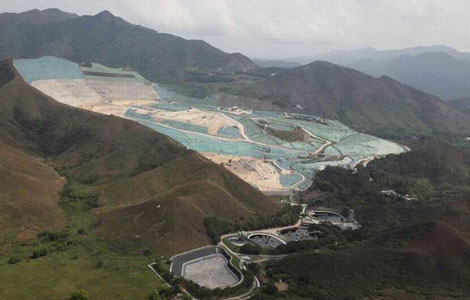
|

|

|

|

|

|
Today's Top News
China issues guidance for government purchases
China calls on APEC to promote FTA integration
Japan, US kicks off 2nd round of TPP-related talks
Website launched to assist expat professionals
Shanghai opens free trade zone
50 foreign experts honored with Friendship Awards
Academic warns Obama on Pacific policy
US Confucius Institutes gather
US Weekly

|

|
